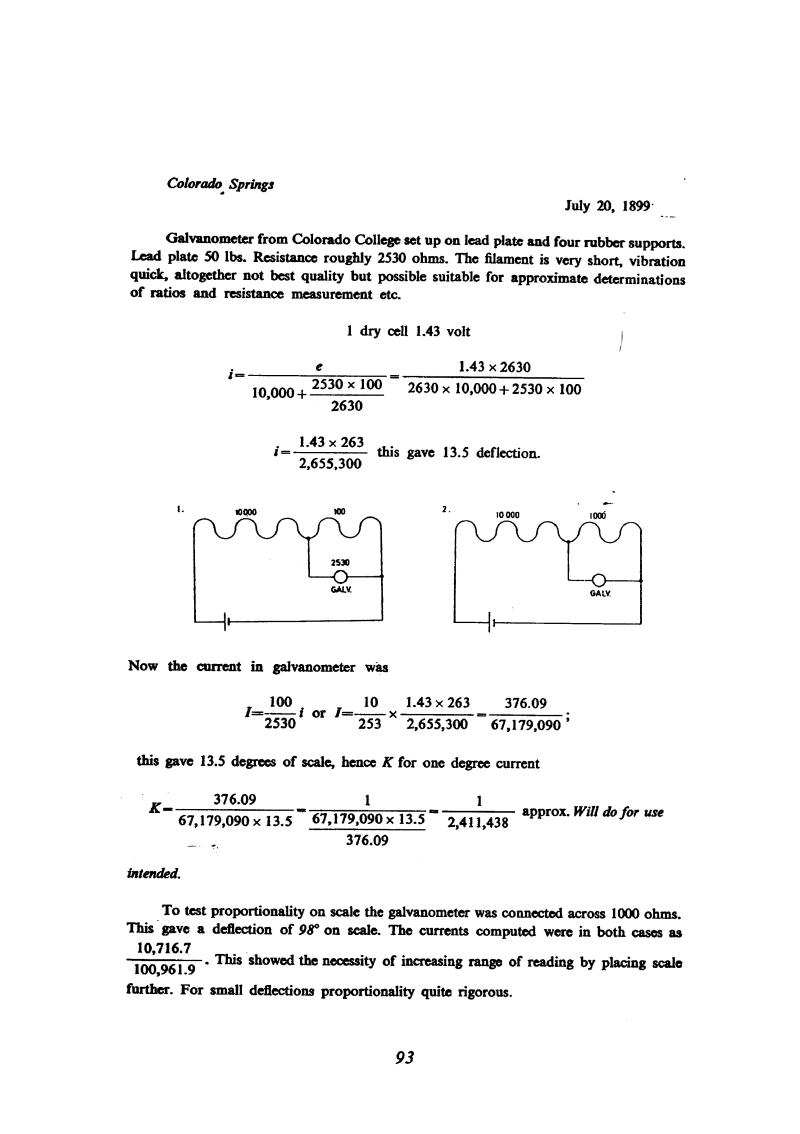
Nikola Tesla Books
Colorado Springs
July 20, 1899
Galvanometer from Colorado College set up on lead plate and four rubber supports. Lead plate 50 lbs. Resistance roughly 2530 ohms. The filament is very short, vibration quick, altogether not best quality but possible suitable for approximate determinations of ratios and resistance measurement etc.
1 dry cell 1.43 volt
$! {i = {e \over {10,000 + {{2530 \times 100} \over 2630}}} = {{1.43 \times 2630} \over {2630 \times 10,000 + 2530 \times 100}}} $!
$! {i = {{1.43 \times 263} \over 2,655,300}} $! this gave 13.5 deflection.
Now the current in galvanometer was
$! {I = {100 \over 2530}i} $! or $! {I = {{10 \over 253} \times {{1.43 \times 263} \over 2,655,300}} = {376.09 \over 67,179,090}} $!;
this gave 13.5 degrees of scale, hence K for one degree current $! {K = {376.09 \over {67,179,090 \times 13.5}} = {1 \over {{67,179,090 \times 13.5} \over 376.09}} = {1 \over 2,411,438}} $! approx. Will do for use intended.
To test proportionality on scale the galvanometer was connected across 1000 ohms. This gave a deflection of 98° on scale. The currents computed were in both cases as $! {10,716.7 \over 100,961.9} $!. This showed the necessity of increasing range of reading by placing scale further. For small deflections proportionality quite rigorous.
93
July 20
For the instrument (galvanometer) which he obtained from Colorado College he determines the sensitivity constant in amperes per deflection step and checks the scale linearity. He assumes that the battery is source of known and continuous electromotive force of 1.43 V with negligible inner resistance.


